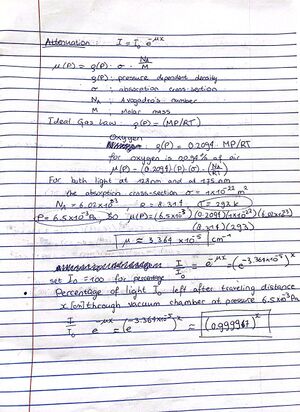Intensity calculations
Intensity of light in the VUV setup
https://www.photonics.com/Article.aspx?AID=56745 for a nice comparison of nitrogen and vacuum VUV systems.
Estimate of detectable fluorescence levels
| This is what I did for the air attenuation, Marjoleins caclulations for the pressure were a big help. |
We will estimate how much a material has to fluoresce in order for us to be able to see this signal above the dark count rate of the SiPMs. We will assume here that we use the visible SiPMs, that they have a geometric fill factor of 65% and are placed at 1 cm from the sample. We will also assume they have a light collection efficiency of 25%. Furthermore, we take the dark count rate to be the maximum (according to the datasheet) of 6 Mcps. Dark counts have a Poisson distribution. With a mean of 6 Mcps, we can approximate the Poisson distribution by a normal distribution with a mean of 6 Mcps, and a standard deviation of sqrt(6e6).
We'll do some very naive statistics here, taking only a single measurement of the fluorescence signal. If we want to be able to say with p≤0.05 that we have seen a signal, we'll need to measure at least 6e6 + 1.65*sqrt(6e6) = 6004042 counts, according to the one-sided z-test values table. As the two SiPMs are 6x6mm, they have a surface area of 72 mm^2. If they are positioned at 1 cm from the sample, we have a solid angle coverage of approximately 5%. Taking into account the geometric fill factor and the photon detection efficiency, we get that we need to get at least 500,000 fluoresced photons per second from the sample in order to measure the 4042 counts above the dark count rate.
Now, let's make a wild guess, and say that the deuterium lamp is a light bulb of 60W (the power supply is 200 W). If it would emit only at 200 nm, the 60 W would correspond to 6*10^19 photons per second, using E=hc/lambda. But of course we emit a spectrum, and then select a single wavelength. We have some geometric factors to take into account, as well as losses due to the slits and the grating, and also air attenuation. So, let us say we irradiate our sample with only 10^12 photons per second. Then the required 500,000 fluoresced photons, correspond to a fluorescence level of ~10^-4%.
